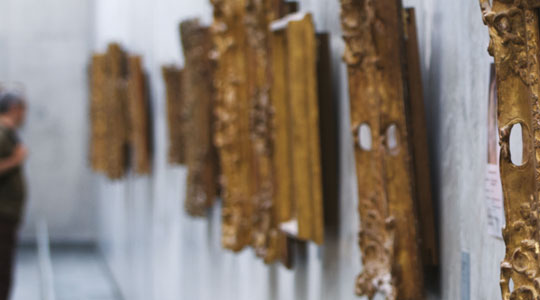When a piece of art is static and in its regular ‘home’ – whether that’s a painting on a wall or sculpture on a plinth, it is usually well protected and unlikely to get damaged. It’s when clients need to move their art – either to a different home, overseas or to an exhibition or museum – we see increased risk to these valuable pieces.
When people think about threats to artwork, front of mind is usually theft and fire, but it’s more mundane risks like moving art when we see the most damage, and these claims are often the most challenging.
High profile examples of damage to masterpieces and ancient works of art in transit shows how real this threat is. In 2001 Rembrandt’s ‘Portrait of an Elderly Woman’ arrived in Moscow from Houston with a large gash in the canvas. In 2000, the 9th Century Book of Kells was reportedly affected by vibration after a flight from Ireland to Australia. If damage can occur to such pieces, it drives home the need for every owner of art to ensure they are doing everything to mitigate risk when their pieces are on the move.
Leave it to the specialists
Clients should be just as discerning about their transit company or shipper as they are about their art collection. The art market is, after all, completely unregulated. There’s no code of conduct, so you rely on the specialist knowledge and experience of shippers and packers. Fine art shippers can work with auction houses, curators and collectors on a loss prevention analysis to assess the best way to move the item and to arrange for adequate handling and storage throughout the journey. However, there will always be times of increased risk, particularly with international transit. Curators and owners often choose to travel with artworks but even they can’t go in the hold! A condition report can be carried out on both sides, before the piece travels and when it arrives, much like when you hire a car on holiday, which gives both the owner and insurer peace of mind.
“We always advise our clients – commercial and private – to use a professional shipping company who specialise in transporting different types of collections. Nevertheless accidents can still happen. Many of the losses you see in transit are down to human error such as a third party putting a forklift through a crate or dropping an artefact while being carried.”
Preparing to manage moving art
We appreciate our clients may often have more than one property and will want to move their art or antiques between homes, sometimes overseas. There can also be frequent movement between galleries and museums.
There are three key areas to think about:
• Collectors often don’t think about insurance from the moment of purchase. Once bought, at the auction house or a private sale, it is the collector’s asset and needs to have cover in place, especially when it is being transported. You should be aware of insurance policy conditions following new purchases. Some policies provide automatic cover for newly acquired art and antiques up to 30% of the total sum insured under this section provided your insurer is advised within 60 days of the purchase.
• Artwork is at its most vulnerable when it is being moved, so it is vital to use a professional and specialist transit company who will treat the item like it is their own. Auction houses and dealers will be able to make these recommendations, as will your insurance broker who will have personal knowledge of the leading international fine art shippers and packers.
• Collectors are increasingly buying art as an investment. Whatever their motives for collecting it is important they maintain up to date valuations for their collection.
For further information contact Michael Gregson, TL Dallas Private Clients on 0131 322 2634 or email michael.gregson@tldallas.com.
Source: Dr James Lindow, Underwriting Director, Ecclesiastical’s Art and Private Client Team


